Quicksand in the well what to do with it
What is the quicksand in the well and how does it affect the quality of the produced water? How to clean the water intake from sand and how not to stumble upon a quicksand when building a well? These and similar questions interest many owners of summer cottages and country houses equipped with autonomous water supply systems with water intake from a well.
So, what is a well in the sea and is this problem so serious as it may seem at first glance?
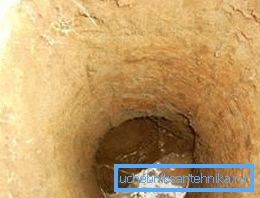
Nature of the phenomenon

As a rule, it is customary to call sand as a pool, the consistency of which is similar to water-saturated soils. As a result, without losing the properties inherent in ordinary sand, the float is able to gush and spread like ordinary water..
Is it bad or good?
Fluids in wells guarantee a number of problems, including:
- insufficient water filtration;
- high intensity of heaving at frosts;
- high probability that the well is completely dry after a short operation.
I must say that to this day, scientists are not able to explain, resulting in a quicksand when digging a well. The nature of this phenomenon has not been studied, however, a number of theories have been put forward, according to which the main causes are the vital activity of certain microorganisms, man-made factors, abundance of sewage and leakage from the sewage system.
However, the statistics demonstrate the fact that the struggle with the quicksand in the well may be required in a variety of areas, regardless of the type of soil and other factors.
Ways to solve the problem
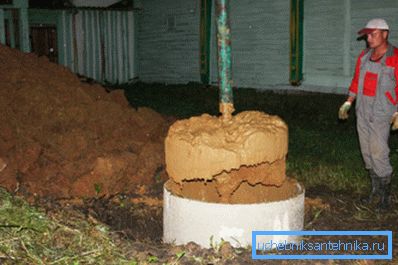
As already mentioned, the situation when gardeners were digging a well - they got on the quicksand, it is relevant for any terrain, and therefore, if you plan to equip an autonomous water supply system, you need to be prepared to solve such problems.
Problems of this kind in the suburban area make themselves felt both when digging wells and when drilling wells. The situation is such that at hydrodynamic equilibrium the mass of the soil is balanced by pressure, since the force is equal to the mass. But in case of violation of this balance during the destruction of the rock, the ground rises rapidly.
When lifting a large number of small particles of sand suspended in the water. These particles clog the watercourses and thus impede the flow of water into the water intake structures.
Repair wells on quicksand can be ordered in specialized organizations. On the other hand, you can try to solve the problem yourself and save money as a result.
Troubleshooting Tips
We offer to your attention a number of recommendations, subject to which the well in the sea will not seem an unsolvable problem.
- First, knowing that the water intake shaft has been dug out on the quicksand, in no case do not attempt to immediately pump out a large amount of water. If we ignore this advice and try to pump out all the water at a time, the sand will surely “hammer” the mine and it will become shallower.
- Secondly, digging a well with your own hands, in the interval between the stages of the excavation work, fill the barrel with water. In some cases, instead of water you can apply a clay water solution.
- Thirdly, it is possible to reduce the likelihood of sand entering the water intake shaft using a bottom filter for a well based on pebbles or medium-sized rubble.
- Fourthly, so that in the well muddy water and quicksand do not become an unsolvable problem for you, use the correct methods of digging the mine or drilling a well. Most often, to pass the quicksand, it is necessary to drill without long breaks and stops. Overdraft is possible at a depth of 0.5 to 1 meter.
By the way, did you know that there is a way of successfully laying a water intake mine on problem soils? We are talking about the so-called Abyssinian well, which successfully operates in conditions of “liquid” float.
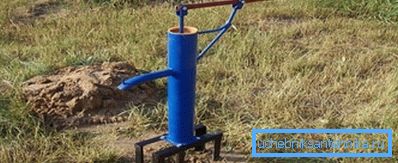
The construction instructions for the Abyssinian well are as follows:
- We find the lowest place on the site and clear it of debris and foreign objects;
- Further, a special hollow inside with a sharpened edges of a metal pipe we drive to the very top with a sledge hammer;
- Then we pull out the pipe and select the stuck rock from its cavity;
- After that, we insert the pipe into the well, fasten a removable rod to its end and hammer it to the very top of the rod;
- Then we pull the structure out again and select the ground from it;
- After this, we continue the drilling process with the addition of all new rods until reaching a depth of 20 meters.
The advantage of this solution is that the small diameter of the well and large depth maintains pressure in the quicksand when pumping water at a depth of 8-10 meters from the surface. However, there is a disadvantage: the small diameter of the barrel makes it suitable for drawing water only a surface pump, the use of which is characterized by a high noise level.
Recommendations for cleaning the well from quicksand
Here are some practical tips with which cleaning the well from the quicksand will become less difficult.
First of all, you can stop the spread of quicksand by installing a shield assembled from aspen boards at the bottom of the water intake shaft. This design will be a significant obstacle to sand in the well.
The choice of aspen boards as a material for shield assembly is not accidental, because aspen in water acquires additional strength, does not contain toxins, and does not rot for a long time.
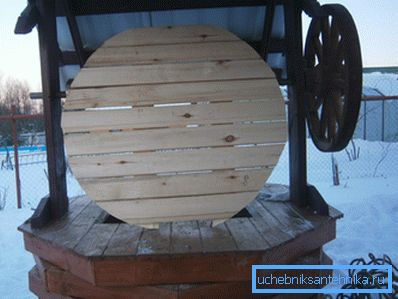
In addition, it is necessary to strengthen and compact the bottom filter. For example, instead of large-sized rubble, you can apply a filling of small pebbles with a greater layer thickness. A dense layer of pebbles will contribute to better filtration and stop sand from entering the well.
A filter made of crushed stone or pebbles can be poured onto the aspen shield with a layer from 50 cm to 1 meter. Due to the load, the shield will not float, and water will accumulate over it. As a rule, a wooden shield and rock filter will cover with sand for 3-5 years. After that, the shield will have to be laid again.
Important: According to statistics, laying of two shields is allowed, after which another mine is dug out or the well being operated is cleaned.
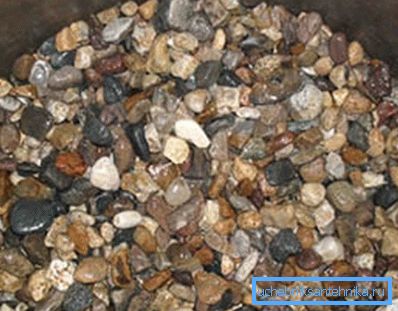
Cleaning and deepening of a water well with float is possible if the well is settled and a cork of compressed sand has formed in it. On average, it is possible to start cleaning work after 2-3 years after the start of operation of the well.
If you proceed to the deepening and cleaning before the deadline, you can remove the compacted sand and thus open the way for less dense sand, which rises to its original level. on the characteristics of the well and the floating (for example, the type of sand, water pressure, flow, etc.).

And finally, the cleaning instructions for the problem well:
- We lower the submersible drainage pump into the water to a depth of at least one meter from the sand plug and pump out the water.
- Then one person goes down to the shaft of the mine and he is served with a bucket attached to the cable.
- The bucket is turned upside down and you need to get up on it so that it is fully immersed in the sand.
- Then, the workers on top quickly pull and empty the bucket, and the process continues.
Tip: In order to speed up cleaning, you can use two buckets attached to different cables.
Conclusion
Despite the fact that the price of professional cleaning of the well is high, everything can be done independently. Sufficiently responsible approach to the implementation of the task and with quicksand you can fight. To make cleaning easier, watch the video in this article.